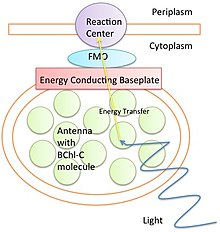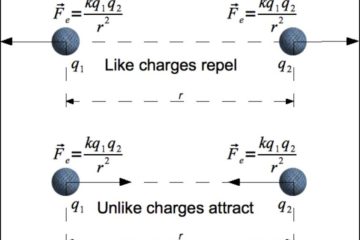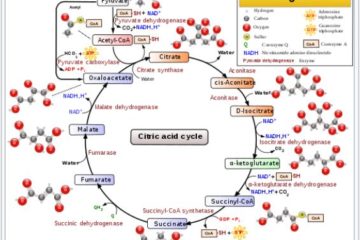In my previous article, I laid out some basics about the sun’s structure and physical characteristics in order to set up the groundwork upon which I could then explain the physical mechanism which underlies the solar cycles I talked about in the article prior to that one. I understand that this is a bit more technical than most readers may be accustomed to, which is why I’ve included a simplified “tl; dr” version before delving deeper.
Solar Dynamo Theory
The leading scientific explanation for the mechanism by which these solar cycles emerge is the solar dynamo theory. It arises from an area of physics called magnetohydrodynamics, which is the field which studies the magnetic properties of electrically conducting fluids, and is covered in most university textbooks on plasma physics. So how does it work?
The tl; dr version is as follows: the convective zone of the sun is a plasma (ionized gas), and it moves around via turbulent convection currents. The flow of these charged particles generates electric currents. Those electric currents generate magnetic fields (via Ampere’s law). In turn, when those magnetic fields change, they induce electric currents (Faraday’s law). In this manner, the dynamo is self-reinforcing, and permits the continual generation of magnetic dipole fields over time. An analogy that helps some people is to think of the magnetic field loops as being like rubber bands. And the convection currents stretch and twist the magnetic field lines. Just as how stretching and twisting rubber bands will increase their tension, the stretching and twisting of magnetic field lines can make the field stronger at certain points and/or change the field’s direction. If this twisting and stretching is done in a particular way (i.e. in the manner which occurs in our sun), it produces a cycle of changing magnetic fields which corresponds to the 11 and 22 year solar cycles.
However, this is an extremely over-simplified version of what the theory entails. There constraints on what sort of velocity fields will produce the observed effects. Namely, the flow must be turbulent like a pot of boiling water (rather than like a stream or faucet). The flow must be three dimensional. That means that the flow must have components in the radial direction, along the meridians (north and south), and along the latitudinal lines (also referred to as the azimuthal direction). And the flow must be roughly helical (Seehafer 1996).
Another critical requirement is differential rotation. In other words, the angular velocities at which the different parts of the sun rotate vary both with radius and with latitude (Schou 1998). The rotation rate at the solar equator, for example, is faster than the rotation at the poles. This is possible for the sun because it is composed primarily of plasma rather than a solid like the Earth. In the convective zone, differential rotation is primarily a function of latitude, and varies only weakly with depth, while the tachocline exhibits a strong radial shear (Howe 2009). The reason for these requirements is that the motions of the plasma must be capable of converting a meridional (poloidal) magnetic field into an azimuthal (toroidal) magnetic field, and vice versa.
The Omega Effect
Basically, if we begin with a meridional magnetic field, the differential rotation of the sun twists and coils this field around the sun, which results in an azimuthal magnetic field. This phenomenon of converting a meridional magnetic field into an azimuthal one is called the Omega effect. Its relevance to the observed solar cycle is that the twisting of the magnetic flux strands in the azimuthal (toroidal) direction in shallow depths and low latitudes create concentrated magnetic “ropes,” which are brought to the surface via magnetic buoyancy to produce the bipolar magnetic fields associated with sunspots and other related activity of the solar cycle (Parker 1955, Babcock 1961).
The Alpha Effect
Contrastingly, the Alpha effect converts an azimuthal (toroidal) magnetic field into a meridional (poloidal) field. The precise mechanism by which this occurs is still not fully understood as of this writing, but it has to do with the interaction between the velocity field of the plasma, the rotation of the sun, the toroidal magnetic field, and the Coriolis Effect acting on rising flux tubes.
From a qualitative standpoint, suppose we have a sphere of hot plasma rotating at an angular velocity ω. Suppose also that the fluid convects, and that certain localized pockets are hotter than the surrounding fluid, and thus move radially outward at velocity u. Additionally, suppose the presence of a toroidal magnetic field which gets partially dragged by the motion of the fluid. Since the sphere is rotating, each of those pockets of fluid is acted on by the Coriolis force ω x u, and therefore twists as it moves upwards and expands. Consequently, the magnetic field lines twist as well. Since the signs of both the Coriolis force and the toroidal magnetic field are reversed in the northern versus the southern hemisphere, this results in small scale magnetic field loops of the same polarity in both hemispheres (Coriolis 1835). The idea then is that these small scale loops of magnetic flux gradually coalesce as a result of magnetic diffusivity, which therefore generates a large scale poloidal magnetic field (Parker 1955).

The Omega Effect and the Alpha Effect. Image by E. F. Dajka
In this manner, a poloidal magnetic field generates a toroidal magnetic field, which in turn regenerates the poloidal magnetic field, and so on and so forth. The poloidal fields predominate during solar minima, while the toroidal fields generate the sunspots and other activity associated with solar maxima. The cycle repeats with an approximately 11 year period, and the associated magnetic fields alternate polarity from one cycle to the next, thus producing the observed 22 year solar cycle. I should reiterate that there are other hypotheses than what I’ve described here, and unlike the Omega effect, which is better understood, no clear scientific consensus has yet emerged on the precise mechanism of the alpha effect. In recent years, a lot of focus has been placed on variants of what’s known as the Babcock-Leighton (BL) mechanism, which is described here.
The Fundamental Equations of Magnetohydrodynamics and the Solar Dynamo
Warning!! Vector partial differential equations ahead!
The mathematically faint of heart may want to scroll past this section!
The physics involved in the dynamo are described by the equations of magnetohydrodynamics (MHD), which derive primarily from classical electromagnetism, but also from fluid mechanics to some extent, because hot plasmas share certain dynamical behaviors with liquids. The relevant equations include the following:
E = J/σ − u × B,
where E represents the electric field, J is the electric current density (charge per unit time per unit area), u is the velocity of a fluid element of the plasma, B represents the magnetic field, and σ is the conductivity of the plasma (J can also be expressed as J = nqvd, where q = the charge of a given particle, n = the number of said particles present, and vd is the average “drift” velocity of the particles).
This actually derives from Ohm’s law. You may be more familiar with Ohm’s law in its common form V = IR, where V is voltage (or electric potential difference), I is the electric current, and R is the resistance. But this is just veiled form of a more fundamental form of the Ohm’s law equation. The current I can also be expressed as I = J·A (the dot product of the current density with area element), and the resistance R can be expressed as a property called the resistivity ρ of the conductor (in this case the plasma) times the length element L of a charged particle’s path divided by the path’s cross sectional area element A, (R = ρL/A).
Thus V = IR becomes V = J·A(ρL/|A|) = JρL. But the resistivity term ρ of a given medium is also the reciprocal of a quantity called its conductivity (denoted as 1/ρ = σ), and the dot product of J·A is just the product of their magnitudes, thus giving us V = JL/σ, or alternatively, J = σV/L. But in many conductive mediums, this term scales linearly with the electric field, and can be expressed as J = σE. However, that’s in a reference frame co-moving with the fluid element. From a fixed reference frame (assuming non-relativistic velocities), and with an external magnetic field B, an additional term must be added to account for the Lorentz force on the moving charges, and the equation becomes J = σ(E + u x B), where u is the velocity of the fluid element, and x is not a multiplication sign, but rather what’s called a cross-product operator.
Dividing both sides by σ, and subtracting u x B from both sides yields the aforementioned E = J/σ − u × B equation.
Another important equation in the magnetohydrodynamics of the solar dynamo is the pre-Maxwellian form of Ampere’s Law:
∇ × B = μ0J,
where μ0 is the magnetic permeability constant, and ∇ × B operator represents what’s called the curl of the magnetic field B.
Finally, there’s Faraday’s Law, one form of which is ∇ × E = – ∂B/∂t, which is basically saying that the curl of the electric field is equal to the negative of the rate of change of the magnetic field with time.
But we already have another expression for E = J/σ − u × B.
By dividing both sides of our ∇ × B = μ0J equation by μ0 to get J = ∇ × B/μ0, and then substituting that for J into our Ampere’s Law equation E = J/σ − u × B, we get E = (∇ × B)/(μ0σ) – u × B.
We can then substitute into our Faraday’s Law equation ∇ × E = – ∂B/∂t, in which case we get
∇ × [(∇ × B)/(μ0σ) – u × B] = – ∂B/∂t.
Rearranging this, we get the following:
∂B/∂t = ∇ × (u × B − η∇ × B),
where η = 1/(μ0σ) is the magnetic diffusivity term.
This is the MHD induction equation. The first term on the right side of the MHD induction equation represents the induction via the flow of electrically charged constituents across the magnetic field, while the second term expresses Ohmic dissipation of the current systems supporting that magnetic field. The relative importance of these two terms is measured by what’s called a magnetic Reynold’s number: Rm = u0L/η, where u0 and L are characteristic values for the flow velocity and length scale of the system respectively. For solar dynamo action, where L is on the order of the solar radius, Rm is invariably much greater than 1. Ergo, the Ohmic dissipation is highly inefficient on this scale, and therefore maintaining a solar magnetic field against diffusion is no problem.
In the next installment, I’ll briefly go over an approach called Mean Field Theory, which astrophysicists and other scientists sometimes use to simplify their mathematical models of large complex systems.
Related Articles:
- How Continental Drift affects Climate: Part I – Plate Tectonics, Albedo, and the SnowBall Earth Hypothesis
- How Continental Drift affects Climate: Part II – Possible Snowball Earth Triggering Mechanisms + Regional Effects of Mountain Ranges
- Milankovitch Cycles and Climate: Part I – Axial Tilt and Precession
- Milankovitch Cycles and Climate: Part II – Orbital Eccentricity, Apsidal Precession and Orbital Inclination
- Milankovitch Cycles and Climate: Part III – Putting it All Together
- The Climatological effects of Volcanic Eruptions: The End Permian Extinction, the Toba Super-Volcano, and the Volcanic Explosivity Index
- The Ultimate Environmental Cataclysm: Asteroid and Comet Impacts and their Effects on Climate
- The Sun and Earth’s Climate: The Solar Cycle and the Maunder Minimum
- The Structure and Properties of the Sun
References:
Babcock, H. W. (1961). The Topology of the Sun’s Magnetic Field and the 22-YEAR Cycle. The Astrophysical Journal, 133, 572.
Coriolis, G. G. (1835). Théorie mathématique des effets du jeu de billard. Carilian-Goeury.
Howe, R. (2009). Solar interior rotation and its variation. Living Reviews in Solar Physics, 6(1), 1-75.
Parker, E. N. (1955). Hydromagnetic dynamo models. The Astrophysical Journal, 122, 293.
Parker, E. N. (1955). The Formation of Sunspots from the Solar Toroidal Field. The astrophysical journal, 121, 491.
Schou, J., Antia, H. M., Basu, S., Bogart, R. S., Bush, R. I., Chitre, S. M., … & Gough, D. O. (1998). Helioseismic studies of differential rotation in the solar envelope by the solar oscillations investigation using the Michelson Doppler Imager. The Astrophysical Journal, 505(1), 390.
Seehafer, N. (1996). Nature of the α effect in magnetohydrodynamics. Physical Review E, 53(1), 1283.




1 Comment
The One True Argument^TM – The Credible Hulk · April 30, 2017 at 8:02 am
[…] can affect the climate with hundreds of citations from credible scientific journals here, here, here, here, here, here, here, here, here, here, here, and […]
Comments are closed.